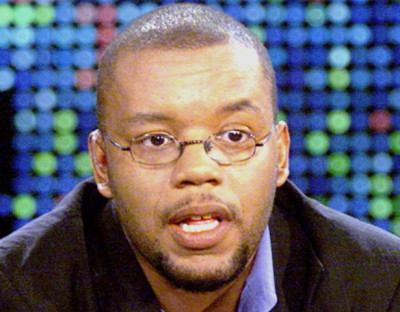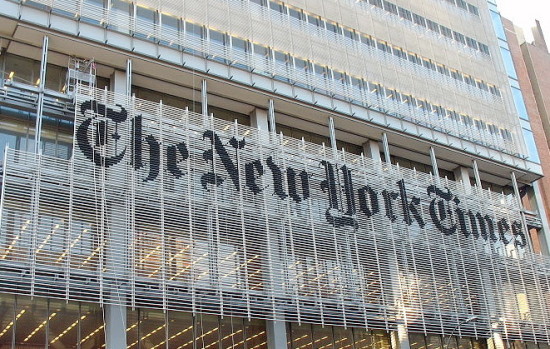Journalism is based on trust. Without it, journalists lose their credibility, if not their readers.
Jayson Blair, a talented and driven reporter on the staff of The New York Times, betrayed that trust repeatedly, disgracing himself and besmirching the renowned daily newspaper that published his fabricated and plagiarized stories.
The Blair scandal, the biggest to rock the venerable Times in its long and distinguished history, is the subject of A Fragile Trust, a discerning documentary due to be screened at the Bloor Hot Docs Cinema on Wednesday, Jan. 8 at 6:30 p.m. and 9:15 p.m. and again on Thursday, Jan. 9 at 6:45 p.m.

Early in the film, Blair is asked why he strayed from the path of honesty and integrity. He replies, “I don’t have a good answer.” In the next hour or so, the question is answered quite thoroughly.
Described as a “journalistic train wreck,” the scandal unfolded in 2003, when Macarena Hernandez, a reporter on the San Antonio Express News, discovered to her horror that Blair had lifted passages from her stories on a missing American soldier in Iraq.
Blair, a young and upcoming reporter, had been assigned to gather material in Texas for a story in the Sunday edition, a few days away. In actuality, he never left New York City, pulling words, sentences and paragraphs from Hernandez’s original story.
“I lied, I lied, I lied,” he admits in an interview. “These were lies of details.”
At this point, the film backtracks to Blair’s middle-class African American upbringing and his attraction to journalism. A type-A personality, he landed an internship on the Times in 1998. One of his colleagues, ironically, had been Hernandez. His editors were clearly impressed by his talents, his dedication to hard work and his ability to wrangle bylines.
Hired as a reporter in 1999, Blair was a whizz. But no one knew he was drinking and snorting cocaine to ward off clinical depression.
In September 2001, shortly after 9/11, Howell Raines was appointed executive editor of the Times. In one of his first memorandums, he ordered reporters to work faster. Taking him at his word, Blair produced reams of copy, but in his haste, he made far too many factual mistakes.
After admitting he had an alcohol and drug abuse problem, management sent him into a rehabilitation program. Only then did Raines realize that Blair was a “troubled individual.”
Most top editors had failed to monitor his performance. One editor had sounded the alarm, warning that Blair should not be allowed to produce further articles for the paper. But his recommendation fell on deaf ears.
By this juncture, Blair acknowledges, he was “falling apart.” He was brazenly making up facts and claiming to have travelled to places he had never visited. Perhaps, as the film suggests, he was out of his depth.

“He mastered the art of pretending to be where he wasn’t,” says an editor.
In reality, Blair was extracting details from photographs he had found on the Internet and from telephone interviews.
At a disciplinary hearing, he conceded he had cribbed and fabricated. In the film, he admits he was given a chance to “come clean,” before it was too late. Blair resigned before he could be fired.
The Washington Post`s media columnist, Howard Kurtz, labelled him a “serial fabricator.” Blair was indeed the author of his misfortune. As a sympathetic Times editor observes, he spent more time plagiarizing and fabricating than actually reporting. A Times investigation proved he had deceived his editors in at least 36 stories.
“He went off the rails,” one of his editors says.
But Blair was not solely at fault. The system had broken down.
“Having decided he couldn’t becomes famous, he decided to become infamous,” says Raines, who, along with the managing editor, Gerald Boyd, was forced to resign in the wake of the Blair fiasco.
Trading on his infamy, Blair wrote a book about his escapades, Burning Down My Master’s House, which was panned and soon forgotten.
Blair regrets having hurt so many people, but he has moved on. He`s a “life coach” today, with some 200 clients. Maybe he can teach them a thing or two about the importance of ethics.
